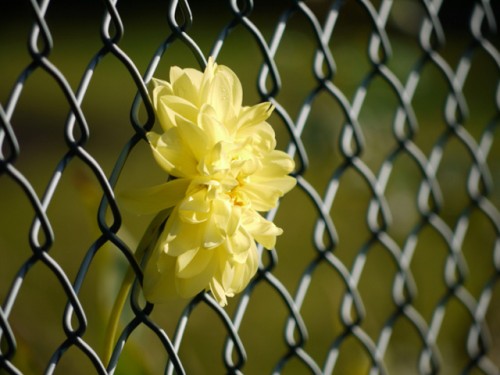Each morning, after reading the news and checking my emails, I reward myself with a quick (okay, not that quick) scroll down the Facebook News Feed. Over a peanut butter bagel and strong cup of coffee, I look at pictures, laugh at status updates, ignore political rants, and leave small traces along the way: Likes, congratulations, the occasional snarky retort. I look forward to my Facebook time. It’s the dessert portion of my morning routine. The little sugary something that warms me into my day. And yet, this is a precarious treat—one day sweet, the next lip-puckeringly tart.
I never know quite how I will feel at the end of my scroll session. Some days, I am energized, connected, warm, fuzzy, and one with the world. Other days, I feel annoyed, left out, jealous, regretful that I let that half hour slip away while others were doing something more productive, more impactful, more meaningful. Admittedly, on most days, my feelings lie between these poles in the far less dramatic realm of mild amusement or hinted anxiety.
My personal experiences of Facebook-induced-emotional vacillations are reflected in a series of recent studies that pertain to Facebook use and mental well-being. Let us discuss them chronologically.
First, back in November, researchers out of the University of Edinburgh found that having a very large network of Friends on Facebook causes stress. This effect was particularly strong for those who added parents and employers. Here, we see a clear case of context collapse, and a nice example of its psychological consequences.
Then, at the end of December, an article published in Social Psychological and Personality Science found that actively posting on Facebook decreased experiences of loneliness, regardless of the levels of interaction that posted material received (e.g. Likes, comments, shares etc.).
Now, as February approaches, a paper from the upcoming proceedings for the 11th International Conference on Wirtschaftsinformatik argues that Facebook use can cause feelings of frustration and envy, and that these are exacerbated by “passive” following (i.e. scrolling through the News Feed without adding content).
In sum, Facebook causes stress, frustration and envy, but reduces feelings of loneliness, yet these effects persist in differential degrees under varying conditions. How’s a social media researcher to make sense of all of this? And more importantly, how is she supposed to respond next Thanksgiving when family member X asks: “So what do you think Facebook is doing to society?”
The short answer, is that Facebook is not *doing* anything to society, but engaged in an intricate dance with social, structural, interpersonal, and emotional processes. The better answer, and the one far more likely to fly with family member X and his social media curiosity, is that Facebook affects us in many ways. It affects the ways in which we are social, and the ways in which we experience that sociality. Because social situations are highly emotive, the ways in which we engage new social platforms will have emotional consequences, which in turn, should lead to distress reducing behaviors. Indeed, if passive consumption causes envy and frustration, and active posting reduces loneliness, then an active participant—rather than a spectator—is, according to the above mentioned studies, better able to avoid distress and achieve feelings of connectedness. This, of course, depends on the social and emotional propensities of the social media user, who may or may not feel capable or comfortable engaging in ways that promote—rather than detract from—mental health.
Importantly, this is not far off from interactive techniques in physical space. Imagine for moment a large party. People are scattered about, engaged in clusters of varying size. Music is playing. Drinks are flowing. Occasional eruptions of laughter sprout from here and then there. This is potentially a lovely scene, one in which party-goers feel connected to one another, full of emotional energy. But what about the wallflower? The guy or gal perched next to the cheese poofs, awkwardly wiping the orange dust off of hir pant leg, bobbing hir head slightly off beat from the music, listening quietly to the conversations of visitors to the food table, who offer the polite hello and linger but a moment before rejoining the collective. We might imagine that the clustered storytellers feel good, while the wallflower feels bad. Passive observers are the wallflowers of Facebook. They are there but not There. Part of the crowd, but not part of the collective. For them, Facebook, like a party, is a source of distress. The wallflower is likely to prefer small gatherings or one-on-one coffees, and likely finds Facebook to be a daunting space. Importantly, while there are those who are consistently the life of the party, and others who consistently reside by the cheese poofs, most of us find ourselves in both of these roles–and in the spaces in between–in different life moments. Sometimes, the party, like Facebook, feels good. Other times, we go out of obligation, and leave early, longing for the non-judgmental quiet of alone time.
Overall, the social and emotional effects of any interaction medium are contingent on use. But beyond this, the affordances of particular media are more or less amenable to different kinds of interaction, which various users will experience in vastly different ways. To understand what social media “does” is to examine simultaneously architecture, normative structure, and an array of experiential realities.
Follow Jenny on Twitter: @Jup83
Pic creds in order of appearance:
http://kenward.blogspot.com/2011/05/record-album-bowl.html
http://www.slumpedover.com/the-perks-of-reading-wallflower.html


Comments 9
nathanjurgenson — January 29, 2013
would also like to point out that what facebook *does* assumes a causal ordering. we don't know in a cross-sectional analysis if facebook or the party *caused* wallflowering or distress, it might also be that some people are distressed, and that follows them at parties and on facebook. some people are depressed, anxious, narcissistic etc, and those people will behave as such at parties and on facebook. so it might not be that clicking "like" will make you feel less distressed, it might be that distress makes you less likely to click "like."
Callan — January 29, 2013
Hmmm... it seems that using Facebook and other social media *could* offer wallflowers a potentially stress-reducing opportunity to observe or passively participate in a social gathering-type environment from a safe distance. Kind of like watching a party or group through a one-way mirror.
But, maybe some of the distress wallflowers experience with the situation stems from unequal expectations -- real or imagined -- that other users might have for them regarding participation in the network. The more introverted folk at parties, or on Facebook, etc., may feel a pressure to contribute something, anything, to what's going on around them -- and/or are sometimes admonished for not doing so, in turn amplifying the initial distress...
jvitak — January 29, 2013
Check out Steinfield, Ellison & Lampe (2008) for some initial causal findings regarding self-esteem and social capital outcomes over a one-year period of use (https://www.msu.edu/~nellison/Steinfield_Ellison_Lampe(2008).pdf). In addition, longitudinal work Moira Burke and colleagues using server data and surveys has established that, over time, Facebook Friends who engage in directed communication (vs. broadcasting messages) report increases in their perceptions of bridging social capital over time (see http://www.thoughtcrumbs.com/publications/burke_chi2011_socialcapitalonfacebook.pdf)
Mike — January 29, 2013
I think it is worth (cautiously) reviving PJ's borrowing of Aristotle's four causes to discuss the role of guns in instances of gun related violence. The material cause, in this case the social media platform, while rarely the most significant, is nonetheless a part of some larger, admittedly complex causal nexus. When one walks away from FB feeling depressed or elated, they may have had a prior propensity, but those immediate instances of depression or elation were in some sense triggered or precipitated by their experience on FB. So while it may be more problematic to talk about FB as the cause of "loneliness" in general, it seems entirely plausible to talk about FB as a (material, at least) cause of particular instances of emotion, be they positive or negative.
In Their Words » Cyborgology — February 3, 2013
[...] “Facebook is not *doing* anything to society” [...]
Friday Roundup: February 8, 2013 » The Editors' Desk — April 1, 2014
[…] drone attacks), the low-tech quantified life, developing a game about unnoticed expiration, and how feelings and Facebook are never […]